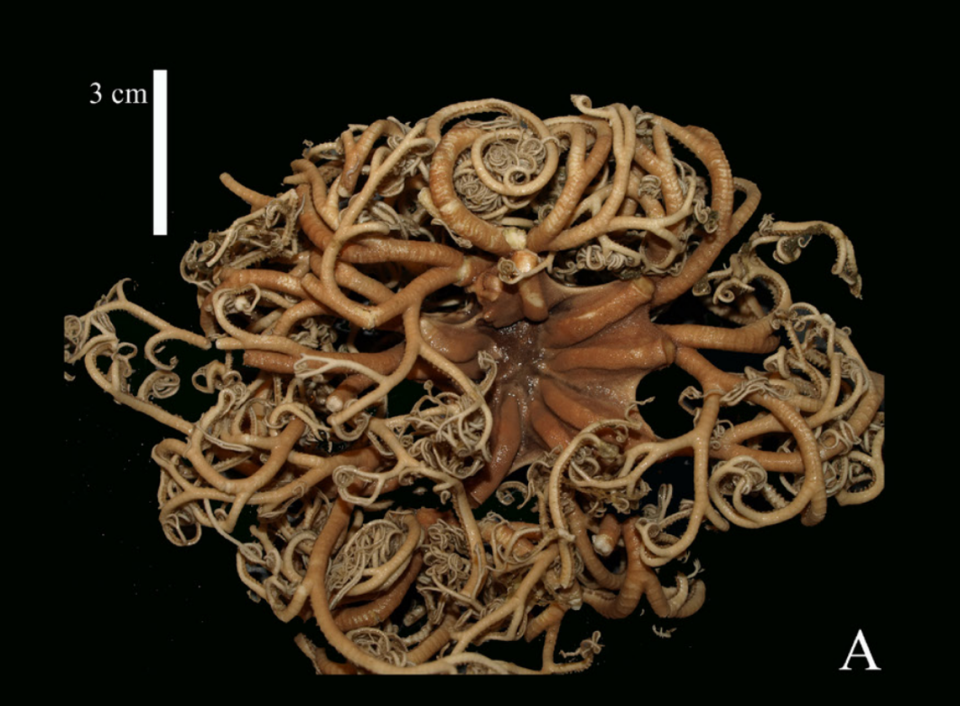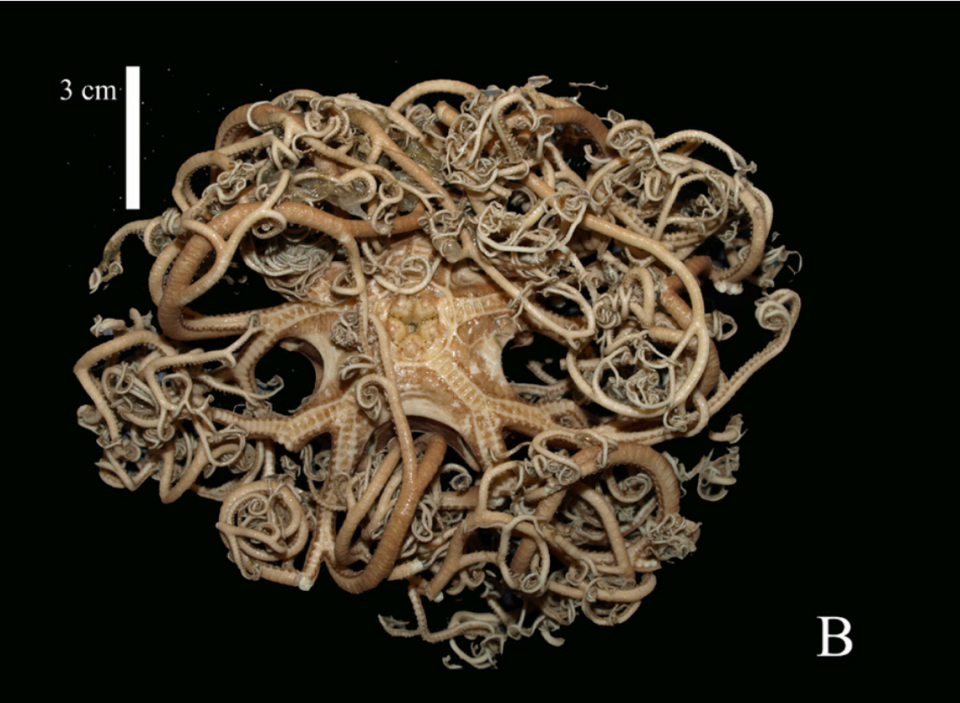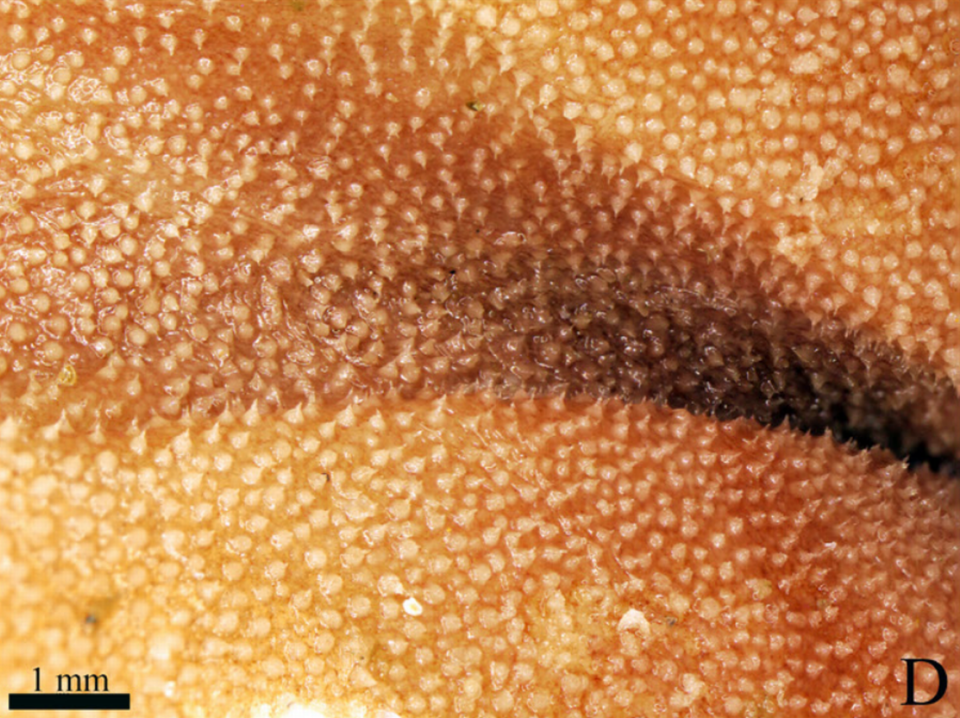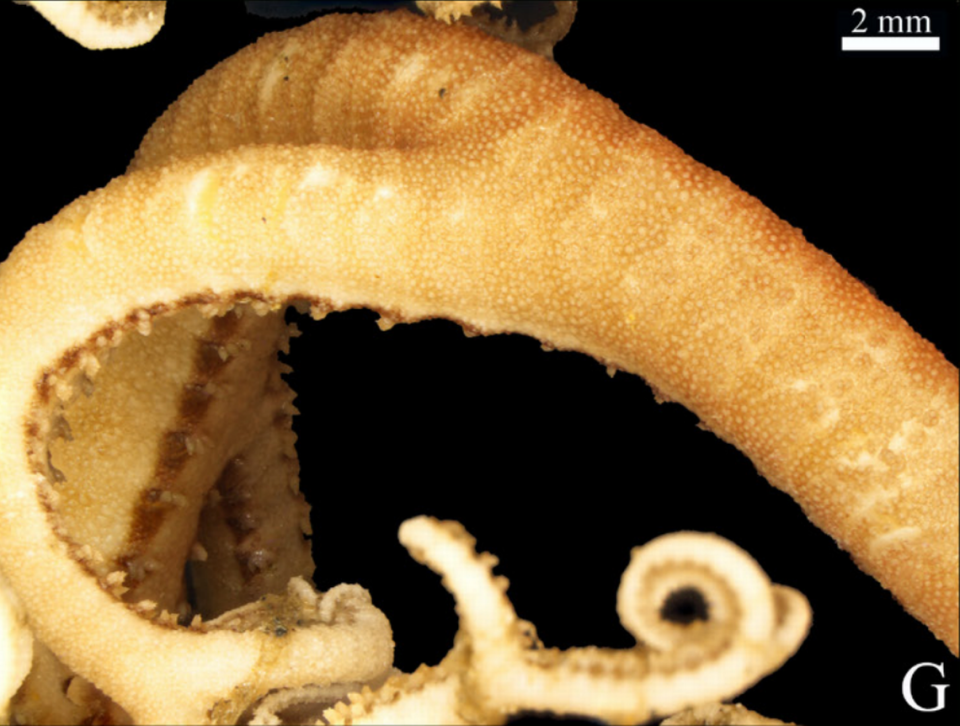Bumpy creature with countless arms scooped from sea — and discovered as new species
Trawling along the coast of northwestern Africa, scientists scooped up several sea animals.
When they hauled in the catch and took a closer look, a bumpy creature with countless arms caught their attention — and turned out to be a new species.
Belén Calero and Fran Ramil spent eight years surveying the coastline of northwestern Africa, according to a study published May 12 in the European Journal of Taxonomy. They surveyed 1,298 different spots across about 3,100 miles stretching as far north as Morocco and as far south as Sierra Leone.
While off the coast of Guinea-Bissau, researchers pulled up their net to find a sea star they didn’t recognize. Studying the animal, they discovered a new species of basket star: Astrodendrum juancarlosi, the study said.
Basket stars are a type of sea star, or starfish, that have “branching arms,” researchers said. Their “branching arms” allow them to “wind around” and live off of various types of corals. Little is known about the biology and behavior of basket stars, particularly along the northwestern African coast.
The new species, Astrodendrum juancarlosi, looks like a tangled mass of rope, photos show. Its mouth and body are in the center, with countless arms branching and spiraling outward. The sea stars range from about 2.2 inches in diameter to about 0.4 inches in diameter, the study said.
These basket stars vary in color “from creamish-pink to dark orange” and from “brown to gray,” researchers said.


Astrodendrum juancarlosi has pointed, calcium bumps on its body and near its mouth, the study said. A close-up photo shows these small, pointed bumps. The sea star’s arms are “completely covered” in rounded, calcium bumps. Another close-up photo shows the knobby texture of its arms.


Researchers found Astrodendrum juancarlosi sea stars living anywhere from about 150 to 2,600 feet underwater.
The majority of Astrodendrum juancarlosi sea stars were found off the coast of Guinea-Bissau, but the species was documented as far north as the Western Sahara, the study said.

Astrodendrum juancarlosi was named “as a tribute to Mr. Juan Carlos Calero,” the father of co-author Belén Calero, the study said.
The new species was recognized as distinct based on its body shape and geographic location, the study said. Researchers did not provide a genetic analysis of the animal.
During their surveys, Calero and Ramil found four other types of sea stars. They extended the known distribution range of several species, including the first sighting of some animals in African or west African waters, the study said.
Google Translate was used to translate the Facebook post from Guinea-Bissau’s Institute of Biodiversity and Protected Areas.
‘Cryptic’ mountain creature — with 9 babies on its back — discovered as new species
Tiny creature covered in spots found crawling on seafloor in Japan. It’s a new species
Scaly creature emerges from rocks in darkness. It turns out to be new species in India

 Yahoo Sports
Yahoo Sports 